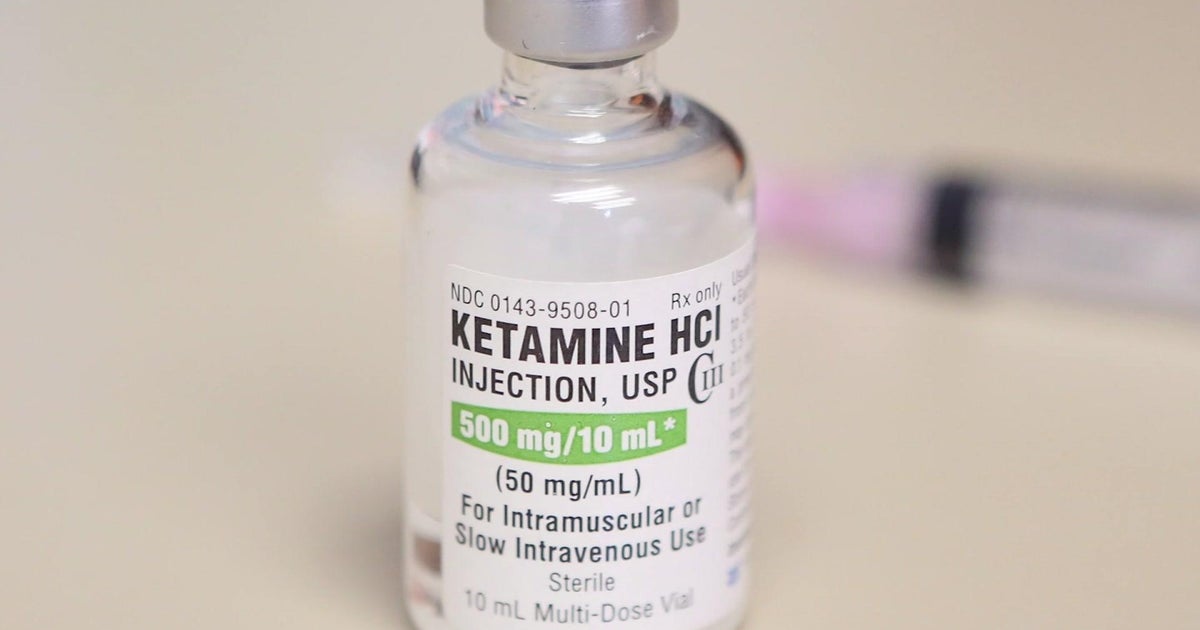Dramatic rise in suicides is "more than a mental health issue," CDC says
Just days after the tragic death of fashion icon Kate Spade, which the medical examiner confirmed Thursday was a suicide, new government research sheds light on a disturbing increase in suicides in the United States. The report from the Centers for Disease Control and Prevention shows that suicide rates have risen dramatically across most of the country in the past three decades.
Suicide is the 10th leading cause of death in the U.S. and is one of just three leading causes that are on the rise.
"Unfortunately, our data show that the problem is getting worse," CDC Principal Deputy Director Anne Schuchat, M.D., said in a press briefing on Thursday.
According to the study, the rate of suicide in the U.S. rose nearly 30 percent between 1999 and 2016.
In 2016, nearly 45,000 Americans age 10 or older died by suicide.
Contributing factors to suicide
While prevention efforts mainly focus on identifying and providing treatment for people with mental illness, experts say suicide is rarely caused by a single factor.
In fact, researchers found that more than half of people who died by suicide during the study period did not have a known diagnosed mental health condition at the time of death. Other issues, including relationship problems, substance abuse, physical health problems, job- or money-related stress, legal or housing problems often contributed to risk for suicide, the report found.
Experts note that mental illness may have been underreported in the study, either because the person who killed themself had not yet been diagnosed or because those left behind were not aware their loved one's condition. However, the fact that so many other factors appeared to contribute to suicide is an important finding.
"Our data suggests that suicide is more than a mental health issue," Schuchat said. "We think that a comprehensive approach to suicide is what's needed. If we only look at this as a mental health issue, we won't make the progress that we need."
The study serves as a reminder, she says, that if someone in your life recently lost a job, ended a relationship, or is having some other life crisis, it's important to reach out.
"Those are the times to really support each other," Schuchat said.
Suicide rates increased for all age groups under 75, but middle-aged adults aged 45 to 64 had the largest rate increase. While the study did not look at the potential reasons why that might be, Schuchat offered a possible explanation. "Increases in suicide tend to correlate with economic downturns," she said, and this generation has been hit particularly hard by economic hardship in recent years.
The report found that firearms were the most common method of suicide for both those with and without mental illnesses.
Suicide by state
The study also broke down the data by state and found suicide rates varied widely. The most recent rates, for the years 2014 to 2016, ranged from a low of 6.9 per 100,000 residents per year in Washington, D.C., to a high of 29.2 per 100,000 residents in Montana.
During the entire study period, rates of suicide increased in nearly every state. Percentage increases over this time ranged from just under 6 percent in Delaware to over 57 percent in North Dakota.
Suicide prevention strategies
The report calls on state and local communities, health care providers, and individuals to take steps to prevent suicide.
"Suicide is a leading cause of death for Americans – and it's a tragedy for families and communities across the country," Schuchat said in a statement. "From individuals and communities to employers and healthcare professionals, everyone can play a role in efforts to help save lives and reverse this troubling rise in suicide."
The CDC recommends everyone familiarize themselves with the warning signs of suicide, which may include:
- A person thinking about or threatening suicide or seeking a way to kill themself
- Increased substance abuse
- Feelings of purposelessness, anxiety, being trapped, or hopeless
- Withdrawing from people and activities
- Expressing unusual anger, recklessness, or mood changes
If you are having thoughts of harming yourself or thinking about suicide, talk to someone who can help, such as a trusted loved one, your doctor, your licensed mental health professional if you already have one, or go to the nearest hospital emergency department.
If you believe a loved one is considering suicide, do not leave him or her alone and try to get the person to seek help from a doctor or the nearest hospital emergency department or dial 911. It's important to remember to remove access to firearms, medications, or any other potential tools they might use to harm themselves.
How to get help
For immediate help if you are in a crisis, call the toll-free National Suicide Prevention Lifeline at 1-800-273-TALK (8255), which is available 24 hours a day, 7 days a week. All calls are confidential.






